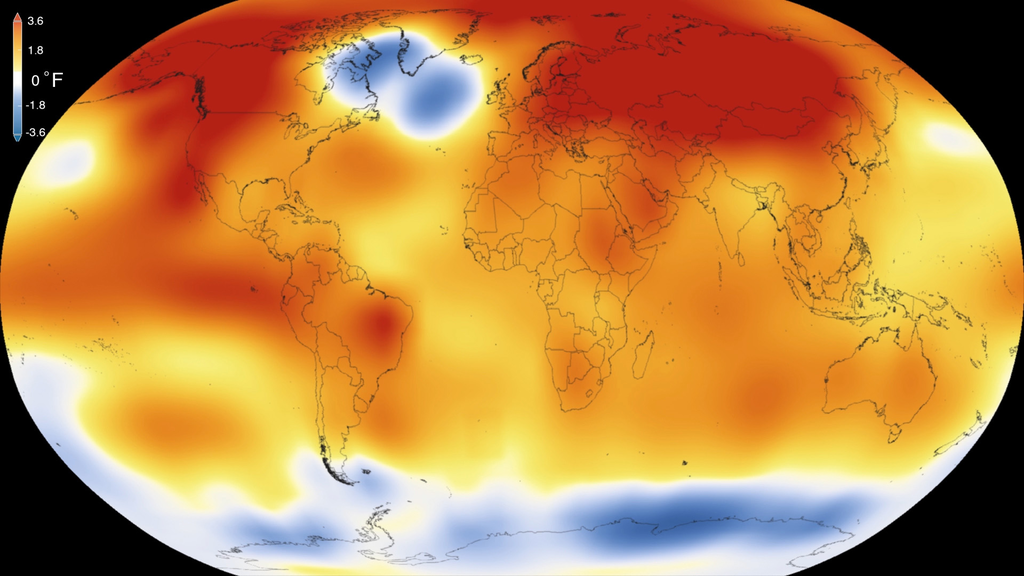In my last article, I talked about how we need to create space to grieve for environmental losses. No loss is greater than that of the entire planet, and while we’re not likely to have the Earth obliterated by the Death Star any time soon, several times throughout its history it has experienced mass extinctions and devastating climate shifts. Our species has existed for the past couple hundred thousand years in a relatively stable period, save for a few ice ages. But as adaptable as we are, it remains to be seen whether we’d survive the sort of extreme climate shift that preceded something as great as the Permian Extinction, which killed off over half of all species.
No one knows for certain how bad our current anthropogenic climate change will be, and whether we’ll be able to reverse our trajectory in enough time to avoid the worst. But as the only known species that can be aware of our future, we have the burden of knowing in just how many ways something can go very, very wrong. And then we get to thinking about it, and worrying over it, and anxiety sets in, and that will do a number on just about anyone’s mental and emotional health.
In fact, climate change is possibly one of the most urgent and critical topics for ecopsychology to address. Yes, it is good for us to work toward reconnecting people with the rest of nature. But we also need to address our feelings toward nature, to include those less pleasant ones like the worry and fear.
Everyone’s method for doing so is different. But one of the key factors that everyone can draw from is resilience. Emotional resilience is the ability to bounce back after an emotional upset. It is not necessarily being able to say “Okay, I’m fine!” right after a traumatic event. Rather, it’s being able to dust yourself off and keep going, even if you have to do so a little more slowly and carefully while you deal with what just happened. Many animals show some level of resilience in the wake of trauma; a gazelle that has just narrowly escaped being killed by a cheetah can’t afford to spend weeks incapacitated by fear. As humans, we live in an exponentially more complicated world than a gazelle, with many more threats of our own making, and divorced from the beneficial properties of nature that all wild animals are immersed in their entire lives.
With the constant threat of climate change hanging over us like the Sword of Damocles, resilience is even more important than ever. This past spring, I co-wrote and co-presented a curriculum on climate change and resilience with Kathy Stanley, an ecopsychology instructor at Sofia University. Sponsored by the Greater Portland Sustainability and Education Network, itself a United Nations University Regional Center of Expertise on Education for Sustainable Development, we created an afternoon-long workshop to teach everyday people skills to deal with the emotional fallout of climate change and its effects. Kathy had created a framework around Joanna Macy’s The Work That Reconnects, which encourages people to respond creatively and constructively to challenges rather than being overpowered. We fleshed it out with both educational material and practical exercises that participants could take with them and even teach other people.
Though the workshop was only a few hours long, by the end the participants felt more empowered to not only deal with climate change, but to work with the emotions that it brought about even if they weren’t the most positive. Just knowing they could do something was enough to shake many out of their despair.
And sometimes that’s where resilience begins: one single action, no matter how small.Sometimes that action is simply: survive. Keep yourself moving one step at a time, one day, one breath, one moment. Everything is constantly shifting, and eventually the pressure you’re under will release, even just a little bit. If you can just hang on until that happens, you can make it through.
But resilience isn’t just about action itself. It’s also about recuperation, perhaps even moreso (you can read more about that here.) This is why self-care is absolutely crucial to building and rebuilding resilience; think of it like putting resilience “points” in a box and saving them up until times get tough, and then taking them out and using them. It’s not always as neat as that metaphor, but you get the idea.
Climate change all by itself is an enormous set of problems with no simple solutions and it can feel as though no one person can do anything. To an extent, that’s true—there is nobody in the world with the power to singlehandedly fix the problem. But when we’re each resilient enough to weather the toughest moments, we still have enough energy to come together and each make our own contribution to collective action for the better.
In my next post, I’ll be reviewing a book that presents some significant–and attainable–solutions to climate change. You can also read about concrete strategies for maintaining hope in the time of climate change.

